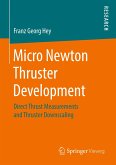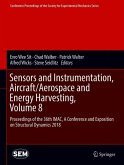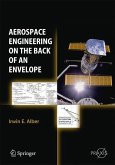Franz Georg Hey summarises the development and testing of a micro-Newton thrust balance, as well as the downscaling of a High Efficiency Multistage Plasma Thruster to micro-Newton thrust levels. The balance is tailored to fully characterise thruster candidates for the space based gravitational wave detector LISA. Thus, thrust noise measurements in sub-micro-Newton regime can be performed in the overall LISA bandwidth. The downscaled thruster can be operated down to serval tens of micro-Newton with a comparably high specific impulse.
About the Author
Franz Georg Hey works as mechanical, thermal, propulsion architect and technical lead of the micro Newton propulsion laboratory of Europe's leading air and spacecraft manufacturer. The author is participating on major programmes for future satellite and electric propulsion development. The author's research is performed in close collaboration with the Dresden University of Technology, the University of Bremen and the DLR Bremen.
About the Author
Franz Georg Hey works as mechanical, thermal, propulsion architect and technical lead of the micro Newton propulsion laboratory of Europe's leading air and spacecraft manufacturer. The author is participating on major programmes for future satellite and electric propulsion development. The author's research is performed in close collaboration with the Dresden University of Technology, the University of Bremen and the DLR Bremen.








